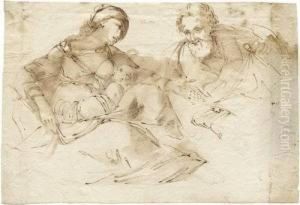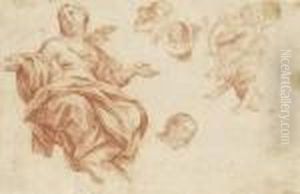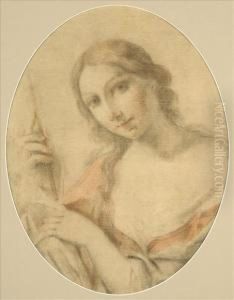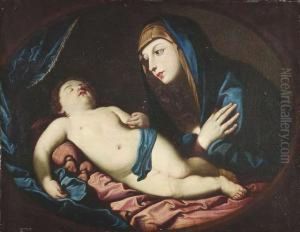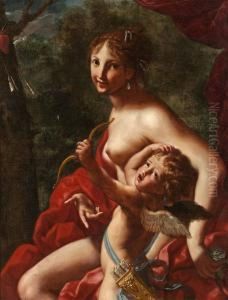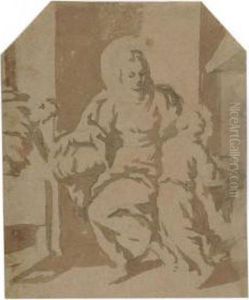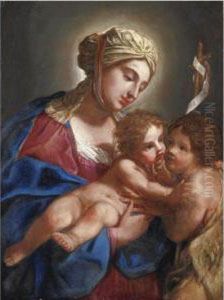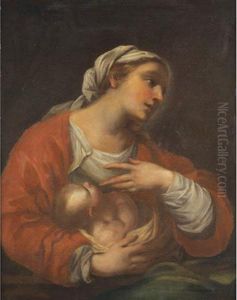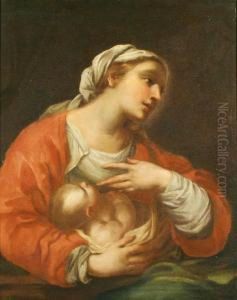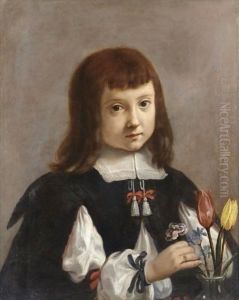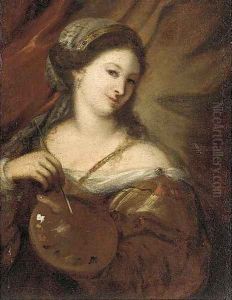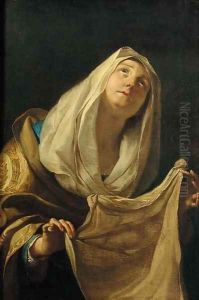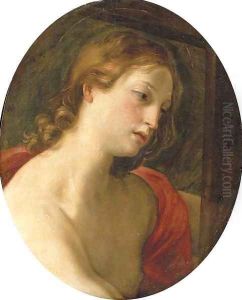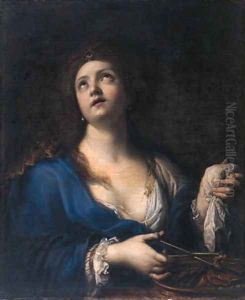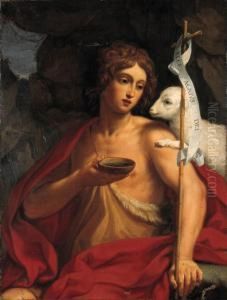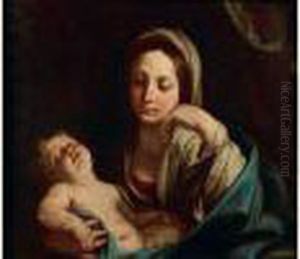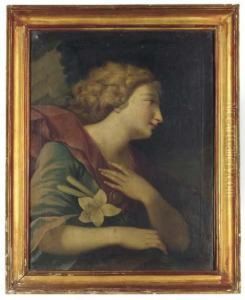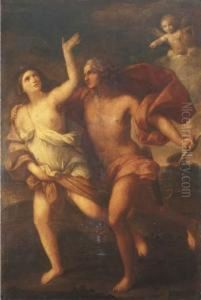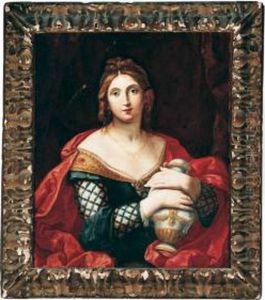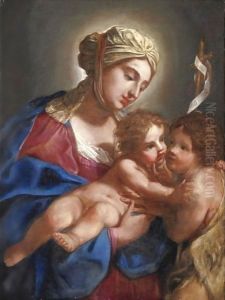Elisabetta Sirani Paintings
Elisabetta Sirani was an Italian Baroque painter born in Bologna on January 8, 1638. She emerged as one of the most important female artists of her time due to her prolific body of work and the significant role she played in the Bolognese art scene of the mid-17th century. Sirani was trained by her father, Giovanni Andrea Sirani, who was himself a successful painter and a pupil of Guido Reni.
Elisabetta quickly showed remarkable talent and began producing professional work at a young age. Her style was characterized by dynamic compositions, vibrant colors, and a particular emphasis on the emotional states of her subjects. She was known for her ability to paint with great speed, which was unusual for her time and led to an extensive oeuvre despite her short life.
Her subjects ranged from religious scenes and portraits to mythological themes. Some of her most famous works include 'Portia Wounding Her Thigh', 'Herodias with the Head of John the Baptist', and 'The Virgin and Child'. Sirani's art was well-received, and she gained the patronage of prominent individuals, which allowed her to support her family financially after her father became incapacitated.
In addition to her painting career, Sirani was also instrumental in promoting the role of women in the arts. She opened an art school for women in Bologna, which was one of the first of its kind and demonstrated her commitment to fostering female artistic talent.
Tragically, Elisabetta Sirani's life was cut short. She died under mysterious circumstances at the age of 27 on August 28, 1665. Her sudden death led to speculations of poisoning, possibly by a maid, although this was never proven. Sirani's legacy continued to inspire female artists in the following centuries, and she remains a significant figure in the history of women in the arts.



